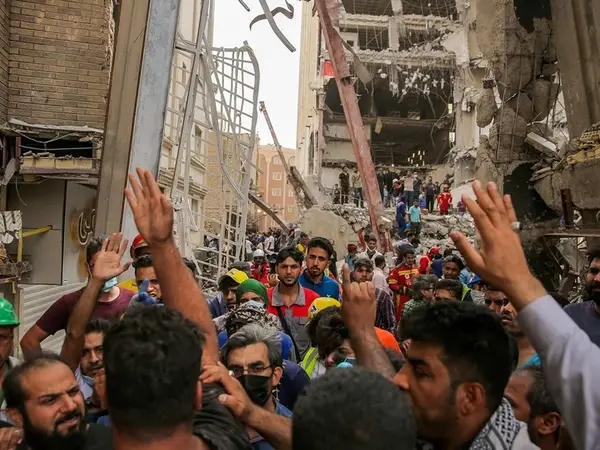After the collapse of a building in Iran’s oil-rich Khuzestan Province triggering protests, commentators in Tehran shed light on the root cause of the disaster.
Reformist activist Davoud Soleimani wrote in a commentary in Etemad newspaper that "the collapse of the Metropol Tower is a miniature symbol of the dynamics prevailing in Iran's government." This is an utterly polite way of saying that the way local and national governments as well as security forces are handling the people's reactions following the catastrophe is shambolic.
Soleimani warned the government that "some of the country's problems cannot be solved simply through the use of force."
He attributed some of the shortcomings in Abadan, where the incident happened, to the government's faulty structures, which in turn gave way to the corruption that led to sloppy construction methods, ultimately killing more than 30 people.
However, Soleimani pointed out that Iran has fairly good laws about regulating construction work and safety, but influential individuals at the municipality and elsewhere in the country's management can always circumvent the laws.
He added that the government should remember the lessons learned from the incident and prevent disregard of safety regulations by influential individuals. Soleimani further pointed out that it is bad when a reporter who had warned about the possibility of a collapse was threatened and silenced by the authorities.
Meanwhile, former lawmaker Davoud Yousefian Molla told Etemad Online in Tehran about the ambiguities surrounding the event. "It is still not known why the search and rescue mission is taking so long. Also, we still do not know who is responsible for compensating the losses sustained," he said, adding that because of widespread distrust, many still do not believe the owner of the building was killed under the debris as the government says.
"The government is working hard to secure the people's trust, but the situation is not good, and the chaotic performance of the authorities leave little room for trust," said Yousefian.He added: "The Interior Minister, the Red Crescent Society and the local governor are at the site of the collapse, but their presence makes no difference as there is no proper search, rescue and relief plan in place."
Yousefian further said, "The fact that we still do not know the identity of those buried under the debris and do not know who is responsible for what happened and who is in charge of search and rescue operations adds to the sense of distrust among the people." He added that this distrust has accumulated over time and is not solely related to this particular event."
Yousefian charged that Iranian officials have been lying to the people since former President Mahmoud Ahmadinejad's presidency. "People used to call former President Hassan Rouhani a liar even before he began to speak. The reason for this is the lack of trust among the people," he said.
In another article in the reformist Shargh newspaper, Iranian commentator Amir Nazemi wrote that "protesters in Abadan know that the dead cannot be brought back to life. What they protest against are corruption, lawbreaking and ignoring the value of life." He added that no concession can calm down the protests but what can relieve the situation is creating an atmosphere for reviewing and correcting the process of decision-making in Iran."
Nazemi called for the government's confrontation with corruption, empowering supervisory bodies and facilitating "e-petitions" and whistleblowing and making sure that those who sign petitions and blow whistles live without fear of judiciary’s reprisal.
